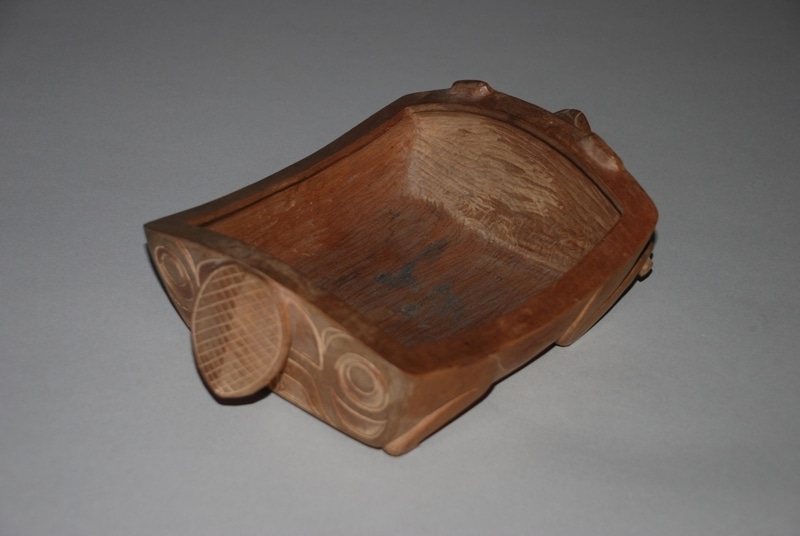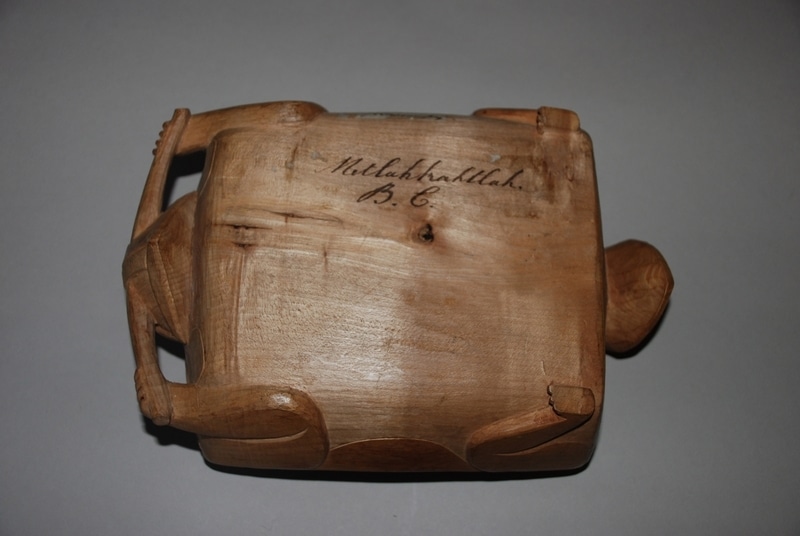Bowl Item Number: 1885.66.10 from the MAA: University of Cambridge




Description
Bowl carved from alder with characteristic undulating rim which is high at the ends and dips on the sides. The bowl is carved in the form of a beaver, with a projecting snout revealing large incisors clenching the characteristic chewing stick which is held by paws. The sides of the bowl form the beaver' s body, having legs, and the end is shaped into a projecting, crosshatched, tail. This end is also decorated with ovoids and U-forms. Inside the bowl the rim can be seen to be a flange. Thelight colour of the wood suggests the bowl has never been used.; Good
Context
On the base of the bowl Metlahkahtlah has been written, a phonetic spelling of Metlakatla, the model village founded by William Duncan, a lay preacher in 1862. At Metlakatla Duncan encouraged the Tsimshian to give up their traditional lifestyle and convert to Christianity, he also encouraged several commercial enterprises, which included the manufacture of tourist art objects, perhaps explaining the unused nature of the bowl (G.Crowther).; Bowls were used at feasts and potlatches, the smaller ones containing oolichan grease, into which dried salmon and other foods were dipped, and larger ones containing other foodstuffs. Together with the decorated spoons of mountain-goat horn the bowls represented a tangible connection between the owners, the lineage, and the economic resources consumed during the feast or potlatch. The display of crest bearing objects underlined the power structure operating at ceremonial events, and demarcated them as significant and removed from everyday existence. The representations carved on some bowls are deliberately ambiguous, thereby allowing a crest identity to be asserted by each owner as the object is exchanged (G.Crowther).; Collected by: Hepburn.J.E
Item History
- Made in British Columbia, Canada
- Received from J.E. Hepburn during 1885
What
- Name
- Bowl
- Identification Number
- 1885.66.10
- Type of Item
- bowl
- Material
- alder wood
Who
- Culture
- Tsimshian ?
- Received from
- J.E. Hepburn
Where
- Holding Institution
- MAA: University of Cambridge
- Made in
- British Columbia, Canada
When
- Acquisition Date
- during 1885
Other
- Keyword
- Food Preparation; Ceremonial Objects; containers